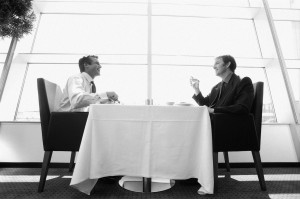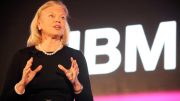How do you build stronger relationships with your future clients? How can you understand your client’s view of the world so that you can create a lasting relationship? For the last thirty years, I’ve been interviewing men and women from many of the world’s most entrepreneurial organizations.
This has provided me with an incredible education and an opportunity to better understand what makes entrepreneurs successful. These interviews provide my clients an opportunity to grow a stronger and more profitable business faster.So what’s the secret of connecting with over 16,000 leaders across the globe? I thought I might share a secret my mentor taught me when I was 16 and it’s worked well ever since.
I call this strategy the past, present, and future interviewing style. If you master it, you find not only great clients but a network of friends that can help you during even the most challenging times. Guaranteed.
The first questions I ask people revolve around their past. I focus on what they’ve done, who they are and how they understand their lives. When I talk with an individual, I look for early successes in their lives and how they achieved them. It shouldn’t be a surprise, but most entrepreneurs start out very young and find creative ways to make money and impact others. If you look into the past of Sir Richard Branson or Bill Gates or Sheryl Sandberg, you find individuals who figured out ways to color both inside and outside the lines successfully. I don’t think great entrepreneurs wake up one morning and suddenly they are great. I find that most have spent a lifetime honing their life philosophies and success formulas. In many cases, their past indicates what they value and how they might pursue their next big thing. I also find that, for my older clients, it reminds them of their past successes and inspires them to move toward their next opportunity. I haven’t talked to a single successful leader who doesn’t have a great sense of humor about their failures when sharing them with me. Humor is a wonderful byproduct of a great life. It reveals much about the person and how the embrace life. Those stories don’t always show up in their biographies but thank goodness they almost always do in their autobiographies.
The second group of questions in my interviews center on the present. How do they present what’s going on in the world today? What are they doing about it and how do they see their role changing in the organizations they lead. I find by understanding their past and then moving to the present, people become excited about sharing what they’re working on now. Many are visionaries and may struggle to share their vision with others. When talking with them about their current situation, I try to apply what I learned earlier from our discussions to their current situation. I work with them to see the similarities and help them draw out distinctions from their current role. When talking about the present, I’m looking for excitement and connection to what they might want to do next. I ask questions to determine with whom they work best and what they want to invest in for their future. During the present communications, we talk about family and personal matters. The personal side of this conversation allows for candid discussions about their strengths and how they could improve what they are doing if given an opportunity.
During this part of our discussion, I might begin testing to see what they want to do next and how they would do it. Typically, we are deciding if there is a good match between the opportunity and their present capabilities. Are there new skills they need to acquire to be better able to achieve their present goals and objectives?
The final part of my discussion is around the future. This is where I give them the opportunity to imagine what can be. I allow them to share what they’d like to create as their legacy and how much they are willing to invest in their future. When talking with successful people, I want them to share with me the future they want to create. It allows them to reconnect with their passions. During this stage, I’m able to see their energy and drive. The future allows many people to share their legacy with someone else in concrete terms. If everything is going well, I find most of these people very interested in moving towards their future opportunities.
Now why did I share this process with you? If we all connect better with people the stronger our community becomes and the more likely we are to succeed in building a better world. If you use this strategy, you’ll enjoy what you do more and enjoy the time you spend talking with clients. For clients, this is something you should experience with your advisors. If you haven’t had this experience with them, you might want to consider why you haven’t. The better people understand who you are, the more successful you’ll be in creating a better future for you, your family, and your community.
If you you enjoyed today’s blog on building stronger client relationships you might also enjoy reading Entrepreneurs, Do You Have the Right Advisors on Your Team?
See you next week.





Be the first to comment on "How Can You Build Stronger Relationships with Your Best Clients?"